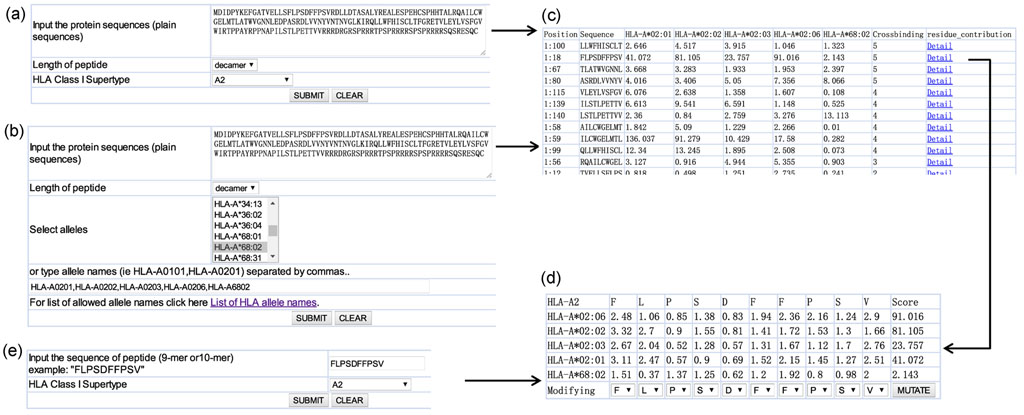|
A series of screenshots illustrating the usage of PromPDD are given in this Figure. For a given protein (e.g., HBcAg, UniProt entry: P03148), HLA supertype-specific peptides with length 9 or 10 can be predicted by the supertype-specific prediction tool (Figure (a)) or by selecting the corresponding alleles in the promiscuous prediction tool (Figure (b)). The predicted results are sorted by the cross-binding abilities of the peptides, as shown in Figure (c). The binding scores predicted by PromPDD are the relative binding abilities of the peptides to the selected HLA molecules, and a higher predicted score indicates high binding affinity to the given HLA molecule. The threshold used to distinguish binding peptides from non-binding peptides is 1 for all alleles available in PromPDD. The contribution of the residue at each peptide positions to both allele-specific and promiscuous binding can be obtained by clicking ¡°Detail¡± and the deciphering results are shown as in Figure (d). A Residue with values greater than 1 for all selected alleles at a given position is implied to be preferred for promiscuous binding, and vice versa. A modification tool for the design of promiscuous peptides is provided in the deciphering result page, and can be used to analyze the cross-binding ability when one or more residues are mutated. For a given HLA supertype-specific binding peptide, the user can analyze the residue contributions using the deciphering and design tool (Figure (e)), and the result page is the same shown in Figure (d).
|




